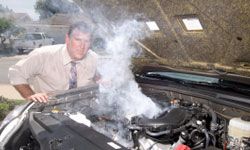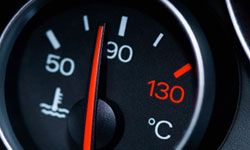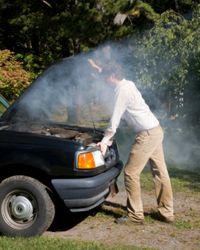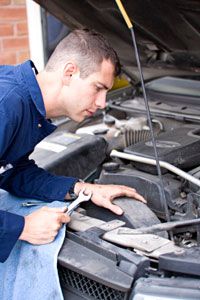If your truck's engine is overheating, you've glanced around, and you haven't traced the problem to any of the usual suspects at the front of the vehicle, you might really be confused. There's another common culprit that people often overlook: The brakes.
That's right. Pull your sweaty head out of the hot engine bay and try checking out the corners. Have you noticed any odd noises coming from the wheels? Any dragging or sticking or vibrations? You might have a stuck brake caliper that's causing the engine to overheat. Yup, even though they're separate systems, and nowhere physically near each other. Here's how.
Brake calipers and brake pads and other brake components tend to stick a lot. They're highly pressurized, made of abrasive materials, create a lot of friction and are used (and misused) constantly. Normally, they hold up pretty well -- especially considering what we ask them to do. But they still stick, even when they're mostly operating properly. And sometimes, they unstick themselves, and we might keep driving without even taking notice. But sometimes, they can get stuck and stay stuck, for almost any reason: a change in temperature, a loss or rise in pressure, uneven wear of the brake parts, improper braking technique...most likely, it's some combination of factors. But when the brakes drag on the wheel, which slows the car, the engine has to work extra hard to compensate for the resistance. The driver might not even notice what's going on, so the engine will just keep churning as the car unintentionally brakes. Yeah, that's lots of extra heat. All over the place. Keep an eye on the temperature gauge and on the fuel, too. Dragging brakes will cause the engine temps to skyrocket and fuel economy to plummet.
So, if you suspect that your overheating issue might be a result of dragging brakes, it's probably safe to get to wherever you're going, as long as you can arrive before your engine gets disastrously hot. Definitely let the brakes cool for a good long while before you go poking around. And if you aren't sure what you're doing when it comes to the brakes, you're probably better off not messing with them.




